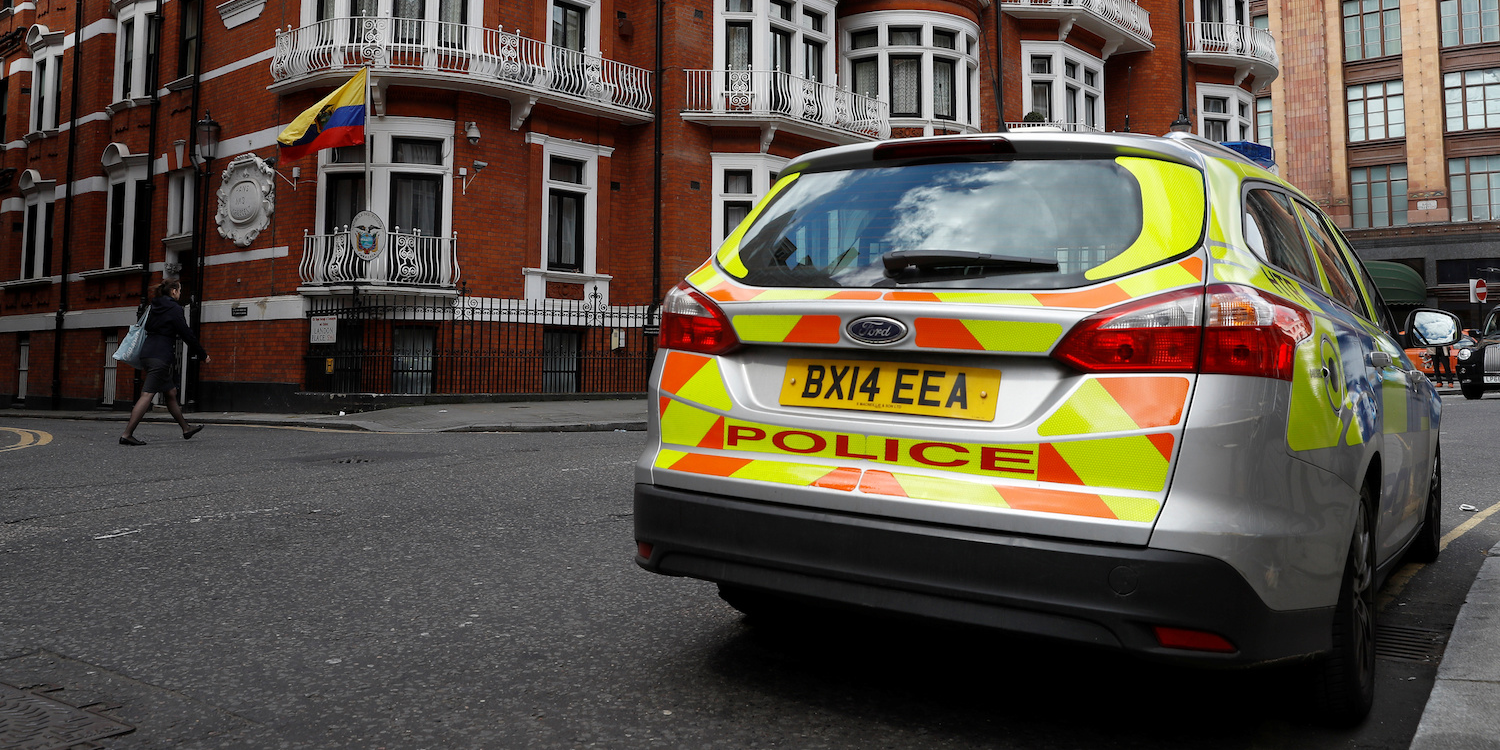- The US government has granted Ford a patent to develop police cars with autonomous capabilities.
- The police car would be linked via wireless connection to surveillance cameras, traffic law databases, and surrounding cars.
- Patent documents say it could help chase down offenders and record traffic offences.
- Scroll down to see designs from the original patent documents.
Ford has been granted a patent to develop autonomous police cars which could ultimately have the capability to chase down speeding drivers and give them a ticket.
The US car company, which produces cars for police forces in the UK and the US, was granted a patent earlier this month to develop cars with the capability to carry out police work independent of human officers.
According to designs seen by Business Insider, the future cars could independently find hiding places, detect vehicles breaking the law, and chase down drivers.
The designers envision car-to-car technology which would let the patrol vehicle check whether a car was being driven manually or automatically, scan the driver’s licence, and, if need be, issue a ticket remotely.
The goal of the autonomous police car, Ford says, is not to replace human police officers, but to help them with "routine police tasks."
The company said in its patent, which was first filed in July 2016: "Routine police tasks, such as issuing tickets for speeding or failure to stop at a stop sign, can be automated so that human police officers can perform tasks that cannot be automated."
The graphics below show how they would work.

The car (labelled 110) would be equipped with sensors (115), such as cameras and a laser system, that would allow it to catch traffic offenders.
Using deep neural networks - a form of machine learning - it would then find a good hiding spot from which to detect potential offenders, like behind a tree (180).
A human police officer would be in the police car throughout, and can retake control of the driving of the car whenever needed.
Now, the police car's sensor can detect another vehicle (120) to be violating traffic laws, such as speeding or running a red light. The police car then pings the central computing system (195), via a nearby communication tower (170), to search a database of traffic laws and determine whether it should pursue the offending car.
Another way the police car could catch traffic violators is by receiving signals, via the communication tower, from nearby surveillance cameras (140), roadside sensors (160), or another car (130) that a car has been breaking laws.
If the autonomous police car determines it has the grounds to pursue the offending vehicle, it can use its own sensor or nearby surveillance cameras to track the vehicle's movement and direction, and follow it.

In the graphic above, the offending car (now labelled 220) is being pulled over by the police car (210). Here, the police car can establish wireless connection with the other vehicle, and transmit messages saying the car had violated traffic laws.
The offending vehicle can then relay the relevant information back to the police car, such as a driver's licence. The police car can then reply with the appropriate punishment, like a ticket.
The human police officer can also at this point leave the car and manually take action if needed.
If such police car is developed, it's unclear whether, when, or where it would come into force. Being granted a patent is also no guarantee that a device will ever be built, but it helps show the direction of Ford's thinking.
The company has, however, previously said it would release some kind of fully autonomous civilian vehicles by 2021.

